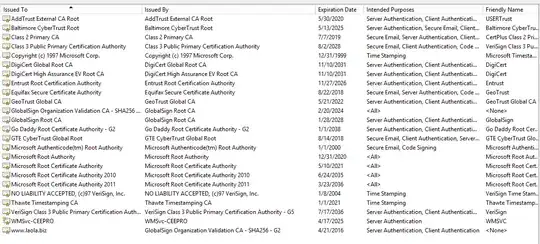I have a Windows Server 2012 R2 instance on Azure. For a new website I have ordered a certificate by GlobalSign. After getting the certificates from them I have completed the certificate request in IIS and installed the root certifcate.
I moved the website to a new instance, so I have exported the certificate with its private key and imported it on the new instance.
That was my installation and it seemed to work pretty well.
Now I am getting a lot SChannel errors. They are:
A fatal alert was generated and sent to the remote endpoint. This may result in termination of the connection. The TLS protocol defined fatal error code is 40. The Windows SChannel error state is 1205.
A fatal alert was generated and sent to the remote endpoint. This may result in termination of the connection. The TLS protocol defined fatal error code is 20. The Windows SChannel error state is 960.
An SSL 3.0 connection request was received from a remote client application, but none of the cipher suites supported by the client application are supported by the server. The SSL connection request has failed.
It's the first time that I use SSL and to be honest, I have no idea what I am doing. For me it looks fine when I request the website (http://laola.biz).
I have already used the SSL Check by GlobalSign which gives me Grade C. https://sslcheck.globalsign.com/en_US/sslcheck?host=laola.biz#191.233.85.240-cert-ssl
Here a list of the certificates from mmc (my website is laola.biz):
Intermediate

Root

Personal

Any ideas what I could have done wrong here?